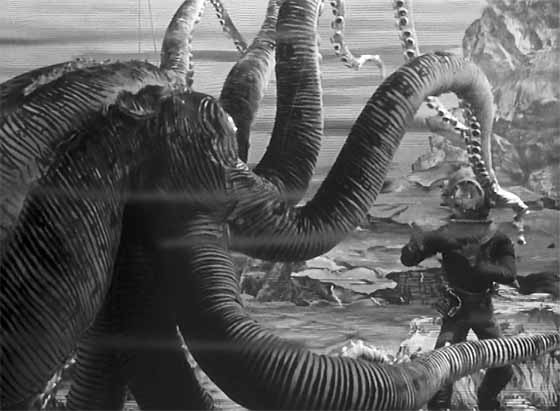
#37 The Fabulous World of Jules Verne (1958)
Part 2 of the 100 Essential Films of the Fantastic. See Part 1 for an introduction. To view all 100, visit the list’s contents page.
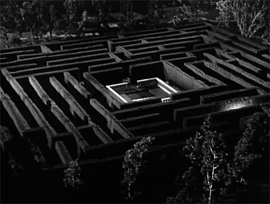 |
#26 The Maze (1953) D: William Cameron Menzies
Rebecca meets H.P. Lovecraft in this tale of a woman trying to reconnect with her fiancé, who has visibly changed since reclaiming his ancestral Scottish home. The prominent feature of the castle is a giant hedge maze, and something seems to be wandering its paths at night… Directed and designed by Menzies, and shot in 3-D. |
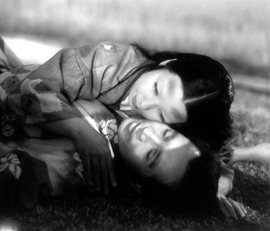 |
#27 Ugetsu (1953) D: Kenji Mizoguchi
Set in 16th century Japan, Ugetsu tells a story of civil war, family tragedy, and the passions of the dead. A classic ghost story from one of Japan’s greatest directors. |
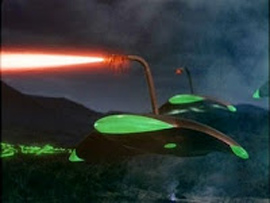 |
#28 The War of the Worlds (1953) D: Byron Haskin
Producer George Pal’s rather terrifying vision of global apocalypse at the hands of Martian invaders. As a priest’s demise demonstrates, not even God can save you. A major film amidst a decade of sci-fi greats. |
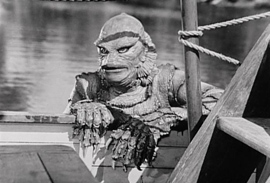 |
#29 The Creature From the Black Lagoon (1954) D: Jack Arnold
A classic Moby-Dick story set in an isolated Amazonian lagoon. A group of scientists (including the beautiful Julia Adams) duel with a missing link that only wants to protect its habitat. Shot in 3-D, with skillfully crafted underwater sequences. |
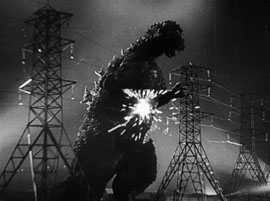 |
#30 Godzilla (1954) D: Ishirô Honda
Forget the Raymond Burr version. The original Gojira is a serious and chilling postwar fable about the horrors of atomic radiation. The rare giant monster movie that’s available from the Criterion Collection. |
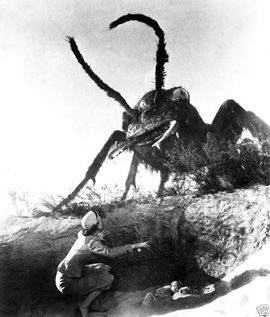 |
#31 Them! (1954) D: Gordon Douglas
Stateside, Hollywood was conducting their own atomic experiments in giganticism. One of the best is Them!, a giant-ant movie that manages to be clever, tense, and fast-paced. “We may be witnesses to a Biblical prophecy come true – ‘And there shall be destruction and darkness come upon creation, and the beasts shall reign over the earth.'” |
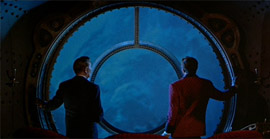 |
#32 20,000 Leagues Under the Sea (1954) D: Richard Fleischer
Disney’s rollicking adaptation of Jules Verne’s novel has a dream cast: Kirk Douglas, James Mason, Peter Lorre, and Paul Lukas. The baroque-steampunk Nautilus, which inspired a Disneyland ride, is the sort of place where I’d like to live. |
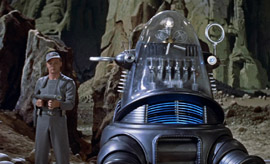 |
#33 Forbidden Planet (1956) D: Fred McLeod Wilcox
It gave us Robby the Robot, which alone would make it a classic, but the film itself – the rare 50’s SF movie with a large-scale budget – is an intelligent, gripping mystery with a Theremin score and intentional shades of The Tempest. Disney animators helped create the invisible monster of the Id. |
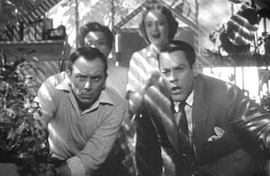 |
#34 Invasion of the Body Snatchers (1956) D: Don Siegel
A very different kind of alien invasion than the one seen in War of the Worlds: these aliens look just like us, and are replacing us, one by one. SF at its most satisfyingly paranoid. |
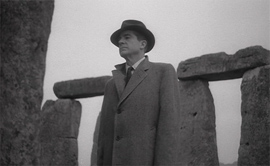 |
#35 Night of the Demon (1957) D: Jacques Tourneur
Tourneur directed classic film noir (Out of the Past) and classic supernatural horror (Cat People), and here mashes them into one seamless hybrid, adapting a supernatural tale by the great M.R. James. |
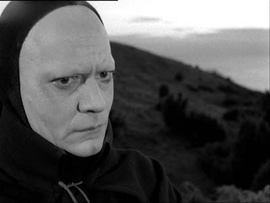 |
#36 The Seventh Seal (1957) D: Ingmar Bergman
With a plague ravaging medieval Sweden, peasants and a knight (Max Von Sydow) try to outwit and escape the roving black figure of Death. Quintessential art house cinema, but also a fine representation of allegorical Middle Ages fable. |
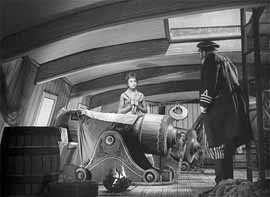 |
#37 The Fabulous World of Jules Verne (1958) D: Karel Zeman
Czech animator Zeman stages a meticulous reconstruction of vintage 19th century illustrations from the work of Jules Verne. Flat, painted sets, cut-out animation, and optical trickery create a unique fantasy setting in this adaptation of Verne’s Facing the Flag. |
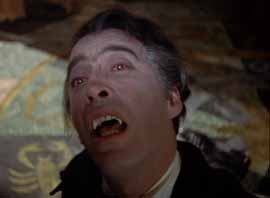 |
#38 Horror of Dracula (1958) D: Terence Fisher
Christopher Lee plays Count Dracula for the first time, and Peter Cushing is Van Helsing: Dracula helped define the formula for Hammer horror, with classy performances, oozing red blood, and sex appeal. Many sequels followed, the best of which is the first, The Brides of Dracula (1960). |
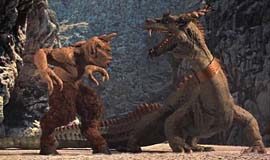 |
#39 The 7th Voyage of Sinbad (1958) D: Nathan Juran
Ray Harryhausen’s first color monster movie, in many ways a tribute to the 1940 Thief of Bagdad, showcases his stop-motion “Dynamation,” including a cyclops, a two-headed roc, a dragon, and a living skeleton. These, along with a score by Bernard Herrmann, helped make this a matinee classic. |
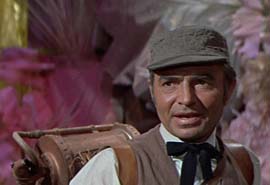 |
#40 Journey to the Center of the Earth (1959) D: Henry Levin
Though it could use the Harryhausen touch (these dinosaurs are iguanas), this Verne adaptation is faithful, funny, and engrossing. A lot of this has to do with James Mason (formerly Captain Nemo), an appealingly driven leader on a mad quest to discover a subterranean realm. Bernard Herrmann provides another terrific score. |
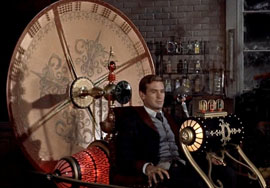 |
#41 The Time Machine (1960) D: George Pal
Pal’s second H.G. Wells adaptation, following The War of the Worlds (which he produced), was one of my favorite films as a child – mainly for the eerie wasteland of the Morlocks and the Eloi, though also for the possibilities of boundless exploration that the Time Machine provides. |
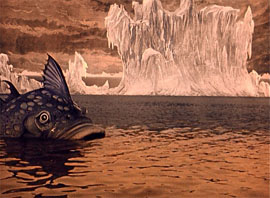 |
#42 The Fabulous Baron Munchausen (1961) D: Karel Zeman
In his follow-up to The Fabulous World of Jules Verne (1958), Zeman teams the famed Baron with a futuristic astronaut for a voyage that begins on the Moon and continues around the globe, whether atop a cannonball or in the belly of a fish. Clever and delightful. |
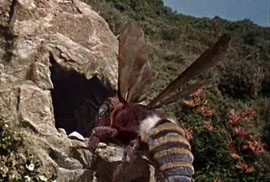 |
#43 Mysterious Island (1961) D: Cy Endfield
In this Ray Harryhausen take on Verne’s novel (“loosely adapted” would be the phrase), island castaways contend with giant animals created by Captain Nemo (Herbert Lom). Scored, once again, by Bernard Herrmann. |
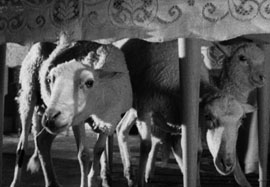 |
#44 The Exterminating Angel (1962) D: Luis Buñuel
Members of the upper crust arrive at a dinner party, but find themselves unable to leave. No reason is given; the doors aren’t barred. As days pass, the situation quickly deteriorates in Buñuel’s surreal comic tale which anticipates his Discreet Charm of the Bourgeoisie (1972). |
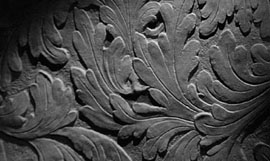 |
#45 The Haunting (1963) D: Robert Wise
In this adaptation of Shirley Jackson’s The Haunting of Hill House, a group of psychics gather in a house that’s been known to kill its occupants. But it’s the psychological instability of Eleanor (Julie Harris) which may prove more dangerous for the investigators. Genuinely frightening stuff, and a landmark in its genre. |
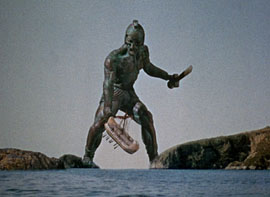 |
#46 Jason and the Argonauts (1963) D: Don Chaffey
Possibly the greatest fantasy film ever made. Jason gathers his Argonauts on a quest for the Golden Fleece, facing challenges in the form of Ray Harryhausen creatures: Talos the bronze colossus, harpies, the hydra, and a squadron of skeletons with some serious sword-fighting skills. |
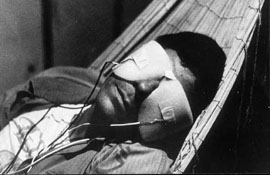 |
#47 La Jetée (1963) D: Chris Marker
This short from French New Wave film-essayist Marker is a poetic Möbius strip worthy of Philip K. Dick. A man from the distant future is projected into the past, where he becomes obsessed with a woman. Remade, differently but effectively, by Terry Gilliam as 12 Monkeys (1995). |
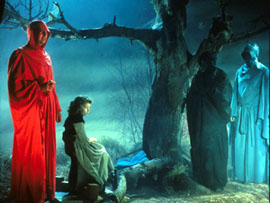 |
#48 The Masque of the Red Death (1964) D: Roger Corman
One of the strongest films in Corman’s cycle of Edgar Allan Poe adaptations, once again starring Vincent Price. But this one’s unusually dark and cynical – and colorful, too, as Corman makes the most of Poe’s particular color scheme. Co-starring Paul McCartney girlfriend Jane Asher. |
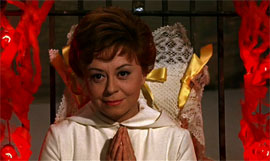 |
#49 Juliet of the Spirits (1965) D: Federico Fellini
A comic fantasy about a middle-aged woman (Giulietta Masina, from the director’s Nights of Cabiria and La Strada), married to a philanderer, who embarks on a psychedelic and ultimately liberating journey. |
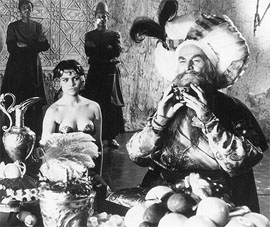 |
#50 The Saragossa Manuscript (1965) D: Wojciech Has
This epic Polish adaptation of the 18th century Orientalist novel The Manuscript Found in Saragossa features stories within stories within stories, all unleashed when a soldier spends the night in a haunted inn. He quickly becomes entangled with a secret harem, the Spanish Inquisition, and the occult, while the viewer grows delirious wandering through the labyrinth of stories the film contains. |









